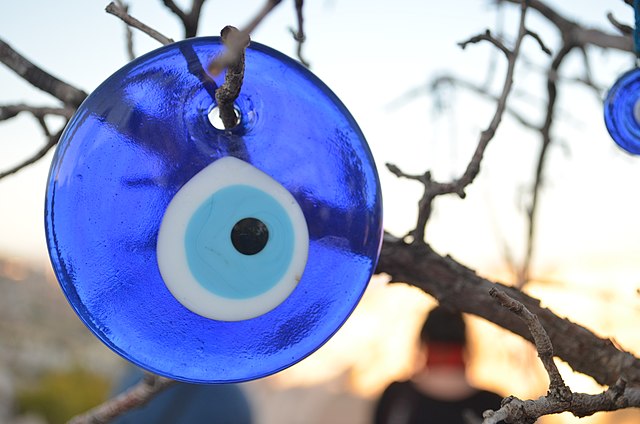An eye bead or naẓar is an eye-shaped amulet believed by many to protect against the evil eye. The term is also used in Azerbaijani, Bengali, Hebrew, Hindi–Urdu, Kurdish, Pashto, Persian, Punjabi, Turkish and other languages. In Turkey, it is known by the name nazar boncuğu, in Greece is known as máti. In Persian and Afghan folklore, it is called a cheshm nazar or nazar qurbāni (نظرقربانی). In India and Pakistan, the Hindi-Urdu slogan chashm-e-baddoor is used to ward off the evil eye. In the Indian subcontinent, the phrase nazar lag gai is used to indicate that one has been affected by the evil eye.
A Turkish nazar boncuğu
Eye beads or nazars – amulets against the evil eye – for sale in a shop.
Eye beads
A depiction of a nazar boncuk on a Turkish airplane.
An amulet, also known as a good luck charm or phylactery, is an object believed to confer protection upon its possessor. The word "amulet" comes from the Latin word amuletum, which Pliny's Natural History describes as "an object that protects a person from trouble". Anything can function as an amulet; items commonly so used include statues, coins, drawings, plant parts, animal parts, and written words.
A nazar, an amulet to ward off the evil eye
Djed, wadj, and figures of gods; amulets made of Egyptian faience.
Amulet, amber, with ear of wheat, Roman period (69-96 AD)
A selection of omamori, Japanese amulets








